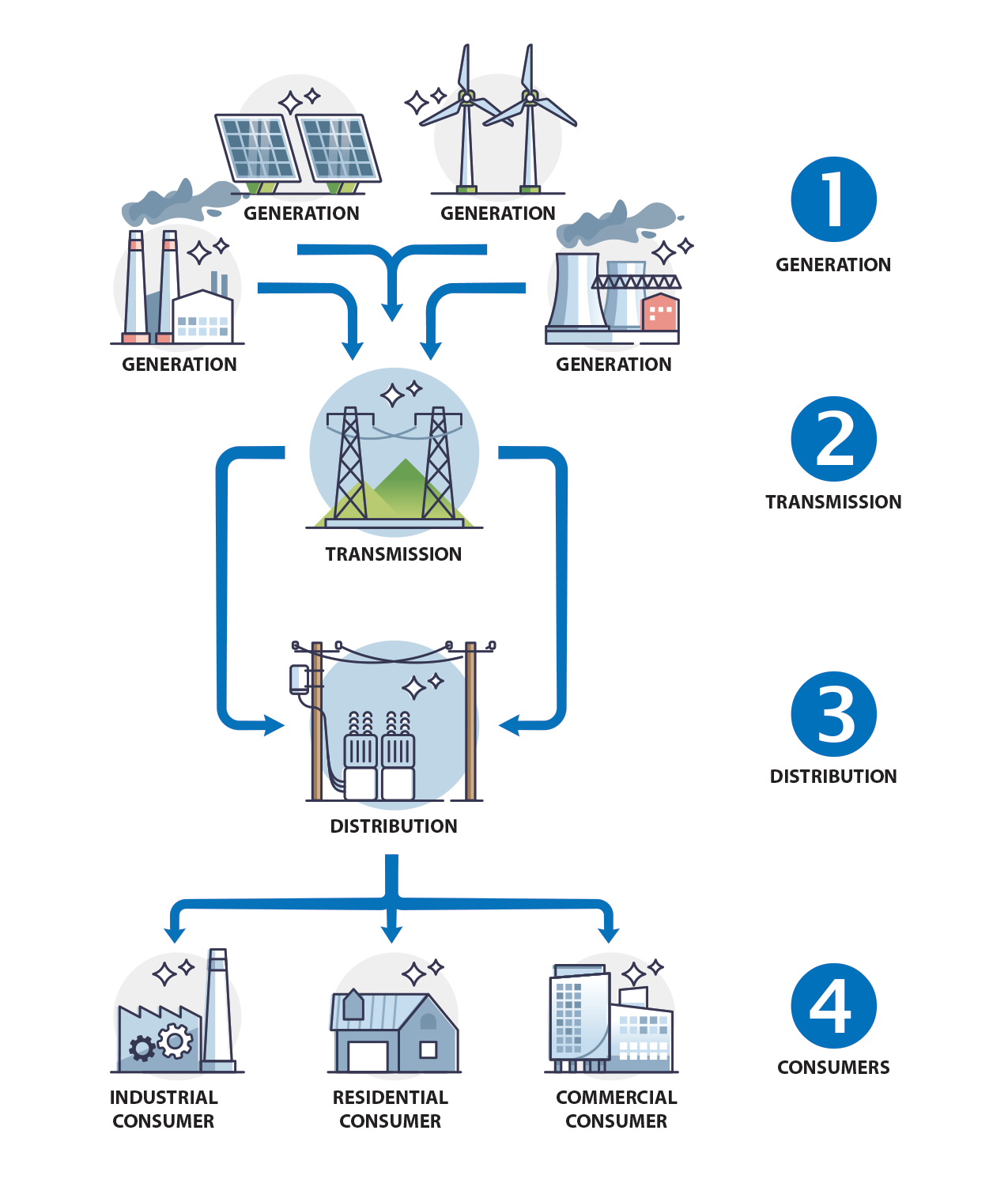Your electric bill can be confusing, but knowing what each piece means helps you take control of your energy costs. In Ohio, your bill is made up of three main parts: Generation, Transmission, and Distribution. Each plays a different role in how electricity is produced, delivered, and billed. This guide helps explain these parts in clear, simple terms—so you can better understand where your money goes and what choices you have as a consumer.
This guide will help you learn about:
- Generation (making the power) – Find out who makes electricity, how you can shop for supply, and what the “Price to Compare” on your bill means.
- Transmission (long-distance power lines) – Learn how high-voltage lines carry energy across states, why it’s part of your delivery costs, and what PJM is.
- Distribution (local power lines) – See how electricity gets from substations to your home and why you pay distribution fees even if you use no energy.
- Consumers (who use electricity) – Discover how rates differ for homes, businesses, and factories, plus what protections and assistance programs are available.

